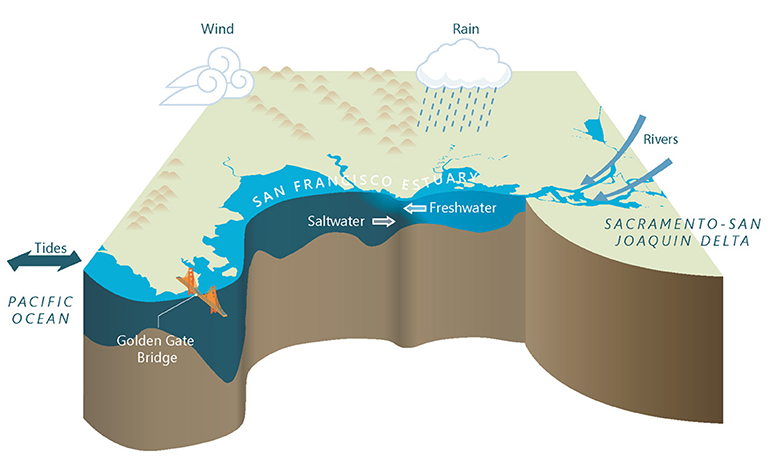How Can We Use Computer Models to Learn About the San Francisco Estuary?
March 29, 2022 – Frontiers for Young Minds and Michael MacWilliams
Every day, tides move saltwater from the Pacific Ocean in and out through the Golden Gate, creating a complex environment in the San Francisco Estuary where ocean water mixes with freshwater. Anchor QEA’s Michael MacWilliams was the lead author, along with California Department of Water Resources’ Eli Ateljevich and Stanford University’s Stephen Monismith, of an age-appropriate article in the Frontiers for Young Minds Journal, exploring how we can use computer models to learn more about the San Francisco Estuary. Frontiers for Young Minds is an open access, peer-reviewed scientific journal that brings the latest research in real-time to school kids between 8-15 years old. This article is part of a collection of articles about the San Francisco Estuary.
Computer Models Help Us Understand the Past, Present, and Future of the Estuary
Computer models are an important tool that we can use to learn more about the San Francisco Estuary. The San Francisco Estuary is a complex environment where salty water from the Pacific Ocean mixes with freshwater from rivers, because of tides, wind, and waves. These physical processes can be described using mathematical equations, which can be solved using computers. Using these equations to represent conditions in the San Francisco Estuary and solving them is called hydrodynamic modeling.

Graphic design by Anchor QEA Senior Graphic Designer Zheng Fang.
Modeling of conditions in the Estuary requires an understanding of physics, mathematics, and computer science, which are combined to help us learn about the processes and environments in the Estuary. Models can be used to predict flooding and to design levees. They can also be used to help us improve how we manage the Estuary to provide a reliable water supply and to protect habitats for plants and animals.
Related Insights
Activated Carbon Effectively Reduces Pollutant Bioavailability in a 5-Acre Lake
February 1, 2021 – Eli Patmont
Continue Reading »Brood Year 2019 Winter-Run Chinook Salmon Operations and Monitoring Assessment
May 27, 2021 – Elizabeth Greene, Senior Managing Fisheries Biologist, Sydney Gonsalves, Fisheries Data Analyst, and John Ferguson, Principal Fisheries Biologist
Continue Reading »
